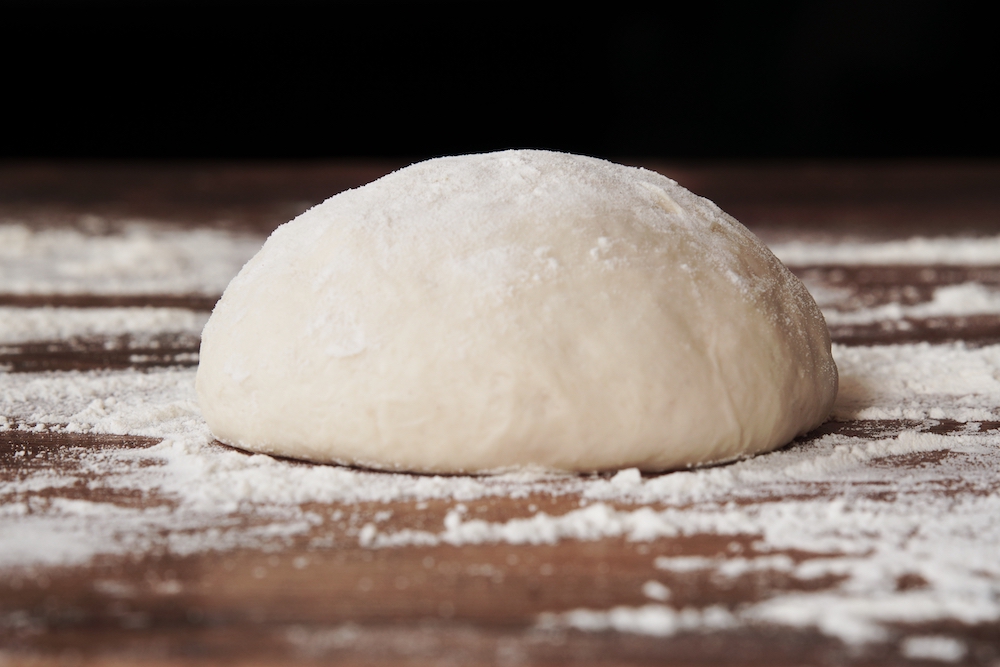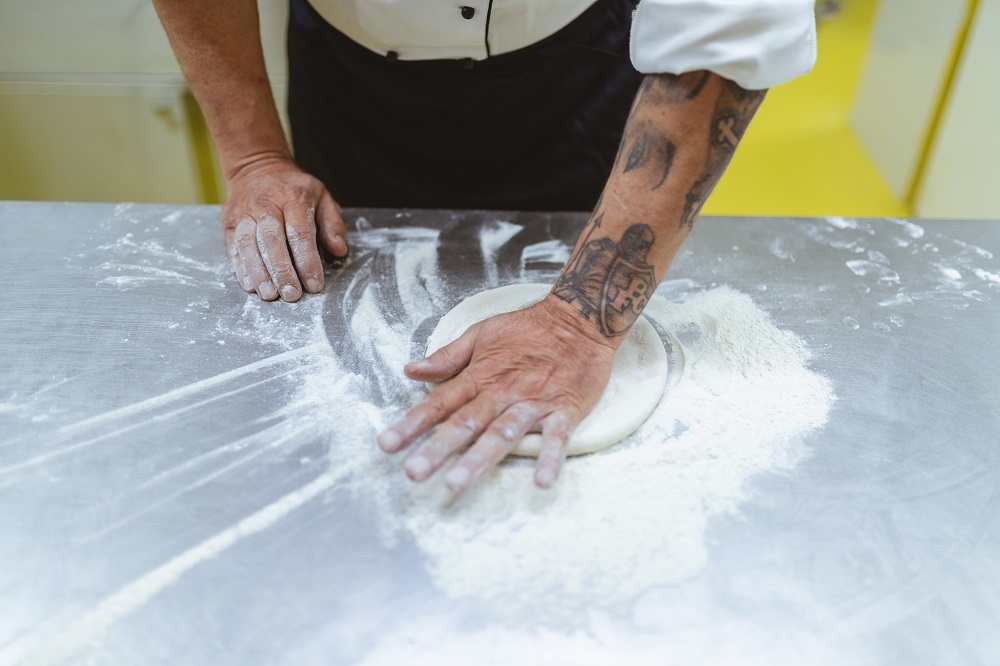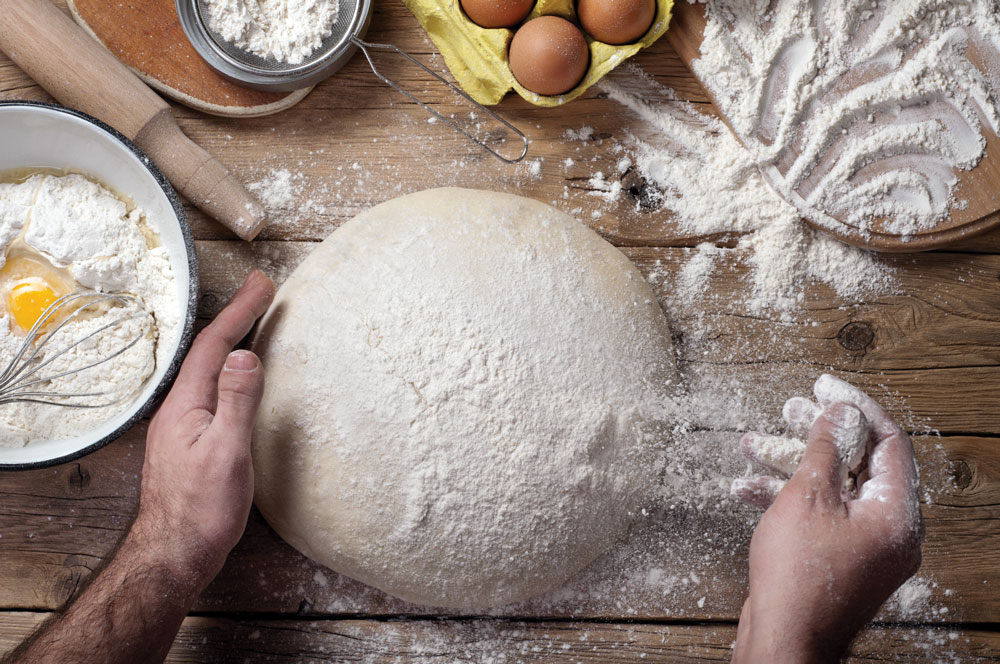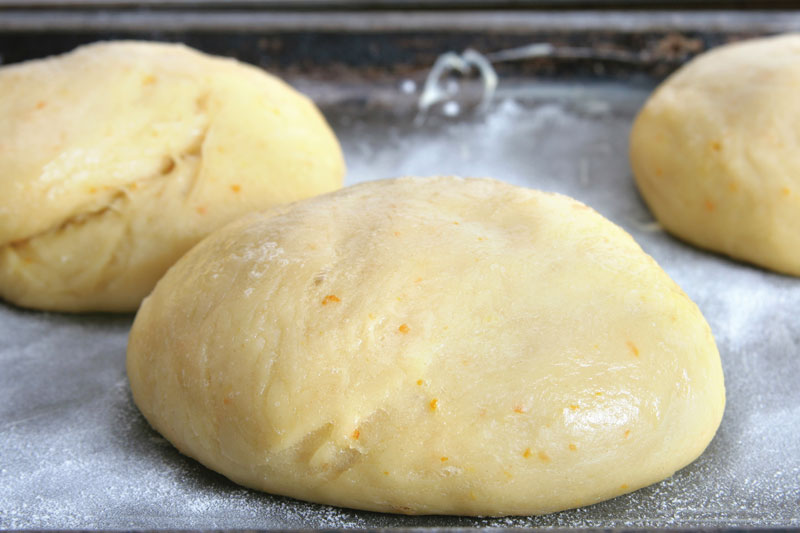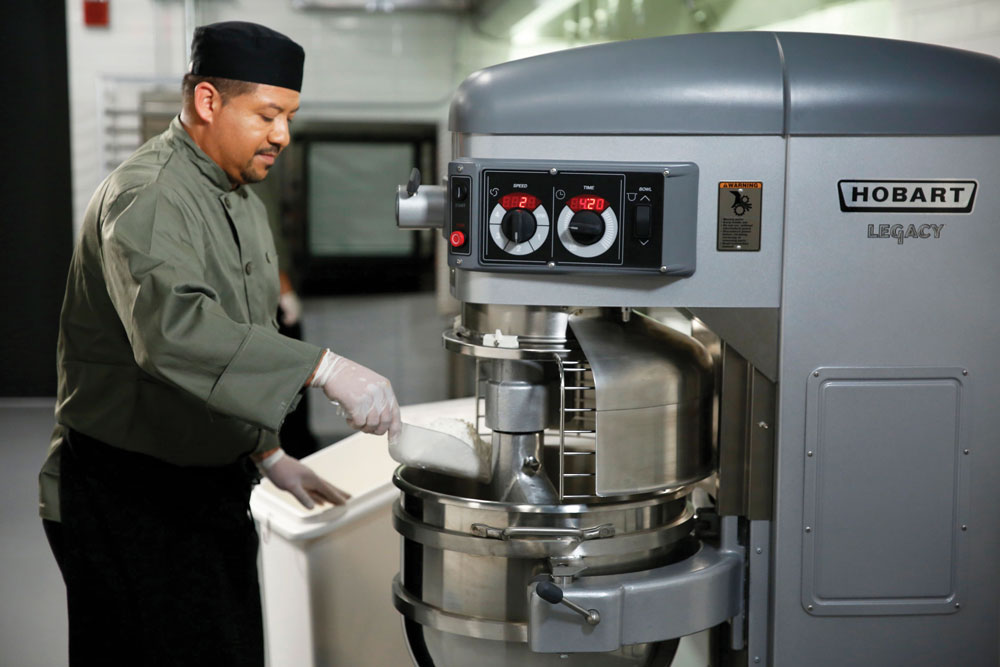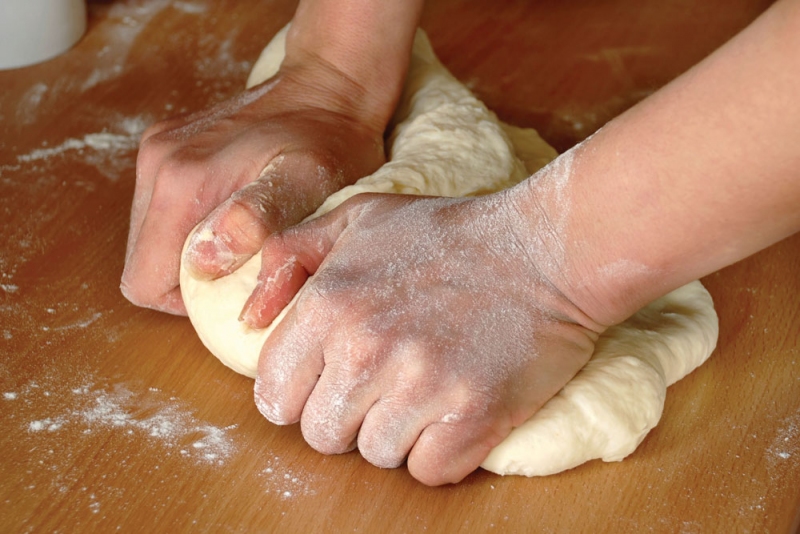Question:
We are using a frozen dough ball to make our pizza crusts. Occasionally we end up with some old, out-of-date product that we were not able to use within the specified shelf-life period. When we have tried to use the dough we found that it did not perform very well. It failed to rise as well as expected. Is there some way that we can salvage this dough rather than having to throw it into the trash?
Answer:
Yes, there is a way that you might be able to salvage that dough rather than having to toss it out. We have done this many times before and it works well for all kinds of bulk, frozen, yeast raised dough. Allow the dough to slack out (thaw) in the cooler overnight. Then put the appropriate number of dough balls in the mixing bowl to achieve the correct dough weight for the mixer bowl capacity. Based upon the total weight of the dough that you’ve put into the mixing bowl, add 0.75 percent compressed yeast (0.25 percent IDY) or 0.375 percent ADY to the dough. The compressed yeast and the IDY can be added directly to the dough. The ADY will need to be pre-hydrated in a small portion of water at 105˚F for a few minutes before adding it to the dough. Mix the dough at low speed for a minute or two, then change to medium speed and mix the dough just until it develops a smooth appearance. Immediately divide the dough into desired weight pieces, form into balls, place the dough balls into a dough box and lightly wipe with salad oil. Allow the dough balls to set out at room temperature for two hours before using the dough to make your pizza skins. Or, if you wish, you can place the dough boxes in the cooler (cross stacked) for two hours, then down stack the dough boxes, covering the top box to prevent the dough from drying out. The dough can be removed from the cooler later during the day for use. Be sure to allow the dough to warm at room temperature for one and a half to two hours before using it. I would suggest that you try to use all of the dough within the same day that you re-mixed it. My personal results when holding this dough over from one day to the next has been inconsistent at best. Probably the best time to re-mix your out-of-date frozen dough (thawed) is in the early morning hours. This way you can have some of the dough ready to use for the lunch time trade, and the refrigerated portion can be used over the remaining portion of the day.
Question:
In some of your articles I’ve seen you make reference to what you call a “sponge-dough” process for making pizza and other products. What is this process?
Answer:
The sponge-dough process is one that bakers have used for many years, but it is little-heard-of in the pizza industry. Making your dough by the sponge-dough process entails taking a portion of the flour, all of the yeast and a portion of the water, mixing it together and allowing it to ferment for an extended period of time. This is called the “sponge.” After the fermentation period, the sponge is mixed with the remainder of ingredients called for in the formula. This is called the “dough” stage. Once the sponge and the dough have been mixed together to form the desired dough mass, it is called a “dough.” This dough would be handled in a normal handling procedure for making pizza skins.
The greatest advantage to the sponge-dough procedure is that it allows for the development of fermentation flavors and attributes to the total dough mass, without developing an excessively gassy dough characteristic as would be the case when using a straight dough procedure (the customary procedure for making pizza dough). In pizza dough production a good sponge ratio is 60/40, meaning that 60 percent of the total flour should be put into the sponge with all of the yeast and 40 percent of the sponge flour weight as water. Typically, this water would be at about 70˚F, or whatever is necessary to give a mixed sponge with a temperature of 75 to 80˚F. The sponge ingredients are combined together in the mixing bowl and mixed for four minutes at low speed and two minutes at medium speed. The mixed sponge is then removed from the mixing bowl and placed into a suitably large container where it is allowed to ferment at room temperature for three to five hours, with four hours being about the norm. After the fermentation period, the sponge is placed back into the mixing bowl along with the remainder of the formula ingredients. When adding the remainder of the water, it should be as cold as possible (ice water) to give a finished dough with a temperature in the range of 80 to 85˚F. Some further adjustment in the water temperature might be needed to get the finished dough in this temperature range.
With the fermented sponge and all of the dough ingredients in the mixer, mix at low speed for four minutes, then at medium speed just until the dough takes on a smooth, satiny appearance. The dough is now completely mixed and should have a finished temperature in the range of 80 to 85˚F. At this point the dough can be divided into desired weight pieces and formed into balls. Place the dough balls into dough boxes and wipe with a little salad oil.
TO USE THE DOUGH ON THE SAME DAY
Leave the dough boxes out at room temperature and cover to prevent drying. The dough balls will be ready to use in about 45 minutes and will remain usable over the following 90 minutes or so. A good way to use this method is to form the dough balls into skins as soon as the dough is ready for forming, then place the formed skins in the cooler for use later in the day. When using those refrigerated skins, be sure to allow them to warm a little at room temperature before dressing them and putting them into the oven. If you’re making a take-and-bake pizza, you can use them directly from the cooler to build your pizzas.
TO USE THE DOUGH ON THE FOLLOWING DAY
Take the boxes of dough to the cooler and cross stack to facilitate cooling of the dough balls. After about two hours, the dough boxes can be down stacked and the top box covered. The dough will be ready to be used on the following day. To use the dough, remove a quantity of dough balls from the cooler, leave them in the dough boxes to warm at room temperature until they reach approximately 50˚F. The dough balls can then be shaped into skins and used in the preferred manner. This dough is best if not held for more than one day in the cooler. Any remaining dough left at the end of the day can be made into par-baked bread sticks or focaccia bread.




